

- Project & Portfolio Management
All PPM packages have rich functionality but more importantly that they are all based on the Advanced Real-time WBS/OSB/FBS Architecture that tremendously increase information efficiency and it in turn tremendously increase in performance visibility and people accountability in projects.
The agility of information and visibility will make people more aware of the problems, their causes and who is accountable. When information is available to all stakeholders in the efficient manner, people tend to be more responsible and have less excuses. Organizations that have implemented PPM have experienced that even if they didn’t change their methodologies and processes much, PPM still could create tremendous benefits for them since what matters most to project success is people’s accountability.

- Project Plan & Execution Are Linked
When there is only 1 mishap, it can be tracked down easily. When there are wrong dependencies built on top of wrong dependencies, unnecessary confusion and complication are created and accountability will also become an issue.
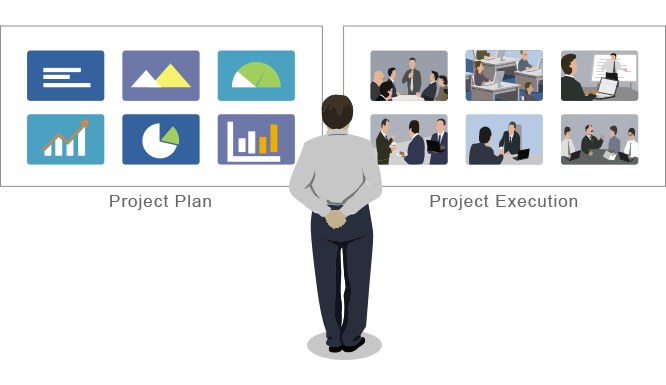
In , plan and execution always go hand in hand. The current plan always reflects the latest status of the project teams deliverables and accomplishments. One can always go back to the baseline of the plan or a previous snapshot version. But there is always one and only one current plan that everyone can share.
- Accountability and Result Are Clear
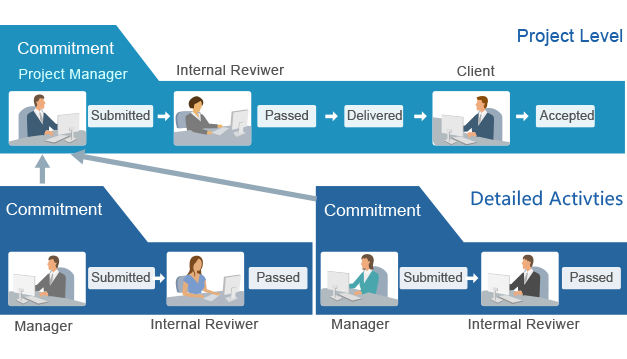
helps to structure work in a natural manner where proper accountability and commitment will be enforced. When someone changes his commitment, will notify the affect parties.
also provides the following ways to facilitate result management:
- Setting policies for review and acceptance
- Real-time alerts for review and acceptance results
- Real-time dashboards and periodical email of reports
- Accountability and results can be made clear to all stakeholders by using the above features
- Requirements Communication & Change Are Managed Together
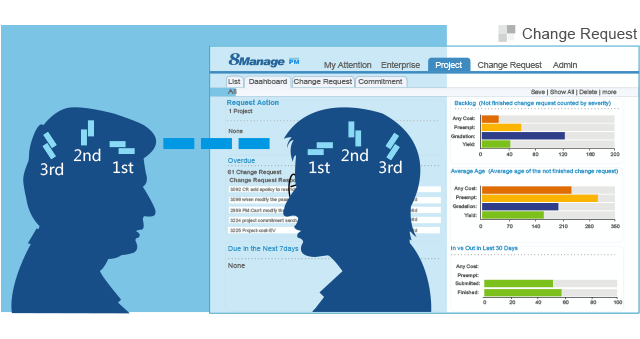
It is difficult to communicate complex requirements in a single exchange. provides a framework for the delivery of complex requirements as necessary. It also automatically tracks the reviews and acceptances of the requirements and provides a Reality Check feature to detect communication problems.
In order to effectively manage complex requirements, automatically detects any shift or change, however slight, in the requirements, associting them with various project phases to alert people so that all involved understand the impact of any modifications. In addition, automatically tracks requirements dependencies and indirect changes, so any potential impact can be anticipated and assessed at the earliest possible time. - Resource Skill and Time Are Planned and Tracked
provides features for searching, requesting, allocating and tracking of resources in multiple sites, groups, PMOs, projects and activities. It automates cost estimating and budgeting and tracks actual against plan.

For human resource management, it automatically detects skill set gaps and overloading. It can aggregate data (e.g., skill set gaps, time spent , deliverable results) from lowest activities to the highest portfolios or groups.
also supports advanced resource management features such as resource provisioning, prediction of future needs and skill set search. - Structured Collaboration Instead of Unstructured Collaboration

provides the foundation for individual and group to coordinate. It facilitates:
- Functional and project-oriented organization management
- Common language for request, commit, deliver and accept
- Group, committee and site coordination and management
- Client, partner and supplier coordination and management
- Inter-organization interaction and escalation management
also provides powerful communication tools such as automated capture email communications into project and activity plans, forums for trailed discussions and on-line chats for small group communications and negotiations. All communication records are stored permanently in .
- Best Practices Are both Encouraged and Enforced
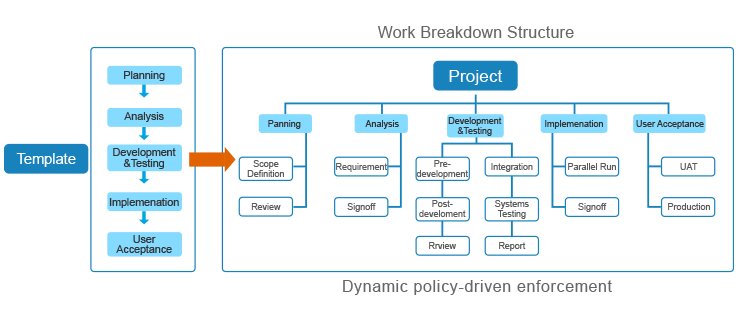
Due to the fact that a static view and a dynamic view are often different, during project execution, people often find certain needed controls lacking and certain procedures unnecessarily clumsy; consequently adjustment to the policies is needed.
solves this problem by allowing people to see both static and dynamic views to make adjustments incrementally. also provides a Project Template facility, and the Policy facility to encourage and enforce practices during project execution.
- Cost Management is Accurate, Integrated and Portfolioized (But Optional According to Policies)
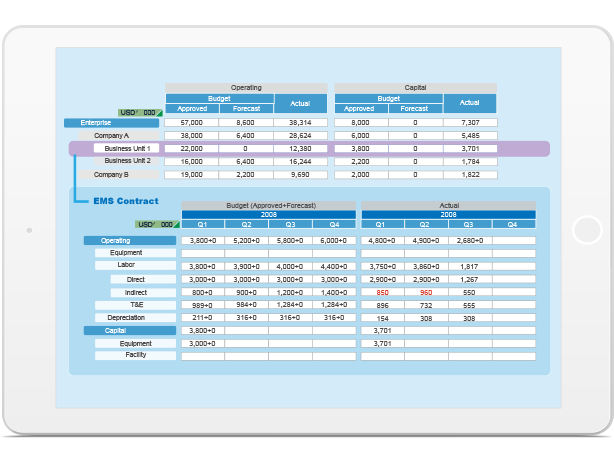
provides complete coverage for managing cost in groups, portfolios, contracts and projects. It features:
- Budget planning and tracking
- Expense management
- Purchase order and account payment management
- Invoicing and account receivable management
- Fixed asset and inventory management
- Project accounting and P&L management
- Contract accounting and P&L management
- Portfolio accounting and P&L management
- Group accounting and P&L management
- Structural Complexities Are Organized and Controlled
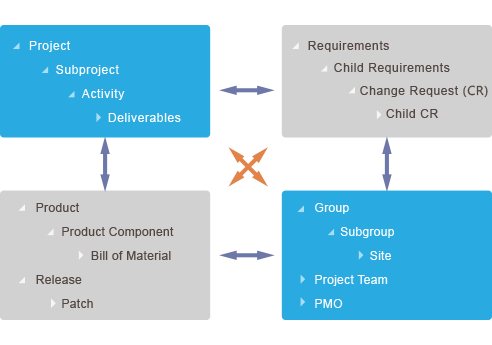
provides a dynamic framework to deal with the structural complexities that can grow overtime to the point that they can cause things to become extremely convoluted or even out-of-control. Typically when organizations are small, they can manage these complexities because they are small. But when organizations without the knowledge and ability to handle these structural complexities grows, they pay the price, operating in an extremely hard-to-coordinate and inefficient manner.
is one of the few tools in the world that is will equip you to deal with these structural complexities effectively. - 9 project management areas
supports PMI 9 project management areas:
- Scope Management
- Time Management
- Cost Management
- Quality Management
- Communications Management
- Human Resource Management
- Risk Management
- Procurement Management
- Integration Management
supports PMI 5 project management processes:
- Initiating
- Planning
- Executing
- Controlling
- Closing
- PMO Management

allows the user to set goals and strategies for their portfolio and also policies to control the execution of the projects in the portfolio. Using portfolio management features, the user can achieve the following:
- Better align projects with goals and strategies
- Able to detect problematic projects at the earliest possible time
- More effective judgment and decisions due to better information
- More effective resource management (right people for the right jobs)
also supports the management of sales and purchase contracts and their underlying projects, costs, deliverables and service level agreements (SLA). The common scenarios for using portfolio management include:
- M&A investment & return (e.g., restructuring or reselling parts of the acquired business)
- Gigantic order (an order is a project)
- Major outsourcing (multi-year service deliveries)








